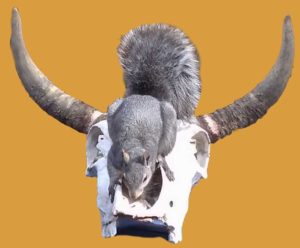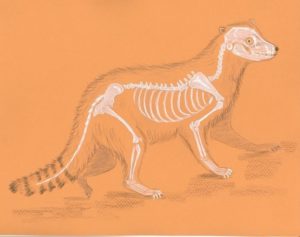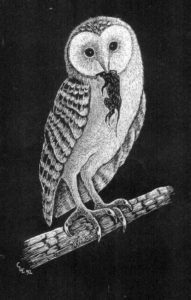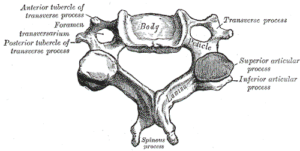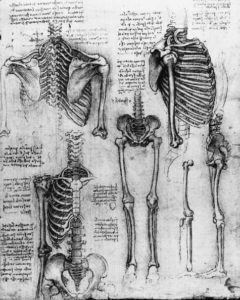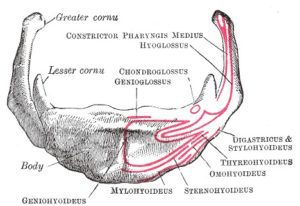What would the Halloween season be without stories of skeletons and bones? So, without further ado, here are some fun (and spooky) facts about them.
Fun Facts about Animal Bones
- Rodents crave gnawing on bones, which mammalogists believe serves the dual purposes of keeping their ever-growing incisors in check and providing vital dietary minerals. The practice is an ancient one – paleontologists recently discovered dinosaur bones with the telltale gnaw-marks from our earliest mammal ancestors.
• Mammals have spiral-shaped bones in their noses called nasal conchae – which serve to moisten and warm the inhaled air and allow for a better sense of smell.
• Bones of dead animals serve important functions in nature. They are decomposed by bacteria, many mammals gnaw on them for vital minerals, and birds eat them to get calcium for making their eggshells.
• Paleontologists who study animal fossils can sometimes determine the identity of a species from as little as just one bone!
• Extinct animals can give clues to their lifestyle and habitat by the size and shape of their bones – especially their teeth and limbs.
• Owls regurgitate pellets containing the entire skeletons of the animals they’ve consumed. These skeletons are so perfectly preserved and complete, that science teachers often have their students dissect the pellets in order to find and rearticulate the skeletons they contain.
• The skeletons of bats, as well as birds, have hollow bones, which lighten the body for flight. Bats are the only mammals evolved for true flight and you can see how their 5 finger bones are similar to those of human hands, though theirs are covered in a sturdy yet flexible skin that makes them both strong and agile flyers.
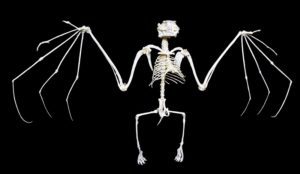
Skeleton of a fruit bat
Fun Facts about Human Bones
- Humans and giraffes have the same number of bones in their necks – just seven!
• Forensic scientists can use human remains from crime scenes to determine the time, cause, and often even the location of death.
• Ancient remains can reveal much about past cultures including occupations and daily activities, all based on telltale wear and tear of the bones.
- Many of our bones join together as we grow, actually reducing the number of bones we have by adulthood. The adult skeleton consists of 206 bones; that’s 94 fewer bones than we are born with!
- What does gardening have to do with skeletons? The exercise that gardening provides, along with much needed Vitamin D from the sun, makes gardening one of the best ways to maintain healthy bones!
- Bones are so much more than the framework for our bodies. Bones are organs that have the ability to change based on the impacts they sustain. They produce red blood cells, store minerals, and nutrients, lipids that store energy and provide structure for muscle attachment.
- The skeletal system consists of more than just bones. It includes cartilage, membranes, nervous, epithelial, and connective tissue.
- The hyoid bone is the only bone in the human body that isn’t connected to another. It’s located in the throat and works with the larynx and tongue to produce vocalization. Because Neanderthals are the only other species to have hyoids, scientists believe they had complex speech patterns.
Drawing Bones in Pastel
I love to draw and paint bones. It all started in a college mammalogy class when I used the process of sketching all the bones, skulls and skeletons we were expected to know for our exam. And that is precisely when I realized how valuable drawing can be in the learning process. A while back, I taught a class in painting a bone in a Georgia O’Keeffe style using pastels. Watch this video demo on drawing a bone in a Georgia O’Keeffe style.
Fascinating BBC Series on Bones: The Origins of Us
Finally, check out this series; The Origins of Us, with host Dr. Alice Roberts; a British anatomist, anthropologist and Professor of Public Engagement in Science at the University of Birmingham. This segment of a three-part series describes our skeletal system and its similarity to our primate relatives in a fascinating manner.


